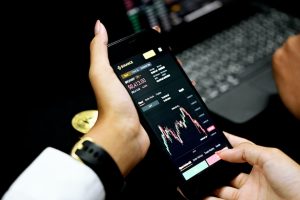Forex indicators are tools that help traders in analyzing the market and making informed trading decisions. They are mathematical calculations that use historical price data to forecast future price movements. Indicators can be customized to suit individual trading styles and strategies. In this article, we will discuss the top 5 forex indicators and how to use them effectively.
1. Moving Averages (MA)
Moving averages are one of the most popular forex indicators. They are used to smooth the price action and identify trends. A moving average is a line that represents the average price of an asset over a specified period. Traders typically use the 50-day and 200-day moving averages to identify long-term trends. A bullish trend is identified when the price is above the moving average, while a bearish trend is identified when the price is below the moving average.
To use moving averages, traders can look for crossovers between the price and the moving average. When the price crosses above the moving average, it is a bullish signal, and when the price crosses below the moving average, it is a bearish signal. Moving averages can also be used to identify support and resistance levels.
2. Relative Strength Index (RSI)
The RSI is a momentum oscillator that measures the strength of a trend. It oscillates between 0 and 100, with readings above 70 indicating overbought conditions and readings below 30 indicating oversold conditions. Traders can use the RSI to identify potential trend reversals and to confirm the strength of a trend.
To use the RSI, traders can look for divergences between the price and the indicator. A bullish divergence occurs when the price makes a lower low, but the RSI makes a higher low. This indicates that the momentum is shifting in favor of the bulls. A bearish divergence occurs when the price makes a higher high, but the RSI makes a lower high. This indicates that the momentum is shifting in favor of the bears.
3. Bollinger Bands
Bollinger Bands are volatility bands that are placed above and below the moving average. They are used to identify the volatility of an asset and to determine potential price targets. The bands widen during periods of high volatility and narrow during periods of low volatility.
To use Bollinger Bands, traders can look for price action to touch or break through the upper or lower band. This indicates that the price is either overbought or oversold and that a reversal may be imminent. Traders can also look for the price to move back towards the moving average after touching the upper or lower band.
4. Fibonacci Retracement
Fibonacci retracement is a technical analysis tool that is used to identify potential support and resistance levels. It is based on the Fibonacci sequence, which is a series of numbers where each number is the sum of the two preceding numbers (1, 1, 2, 3, 5, 8, 13, 21, etc.). The levels are drawn from the high to the low or from the low to the high of a price movement.
To use Fibonacci retracement, traders can look for the price to retrace to the 38.2%, 50%, or 61.8% levels. These levels are considered significant because they are based on the Fibonacci sequence. Traders can also look for confluence between the Fibonacci levels and other technical indicators, such as moving averages or trend lines.
5. MACD
The MACD (Moving Average Convergence Divergence) is a trend-following momentum indicator. It consists of two lines, the MACD line and the signal line, as well as a histogram. The MACD line is the difference between the 12-day and 26-day exponential moving averages, while the signal line is a 9-day exponential moving average of the MACD line.
To use the MACD, traders can look for crossovers between the MACD line and the signal line. A bullish crossover occurs when the MACD line crosses above the signal line, while a bearish crossover occurs when the MACD line crosses below the signal line. Traders can also look for divergences between the MACD and the price, similar to the RSI.
In conclusion, forex indicators are essential tools for traders to analyze the market and make informed trading decisions. The top 5 forex indicators discussed in this article are moving averages, RSI, Bollinger Bands, Fibonacci retracement, and MACD. Traders can use these indicators in combination with other technical analysis tools to develop a trading strategy that suits their individual needs and preferences. However, it is important to note that no indicator is perfect, and traders should always use caution and risk management when trading in the forex market.





